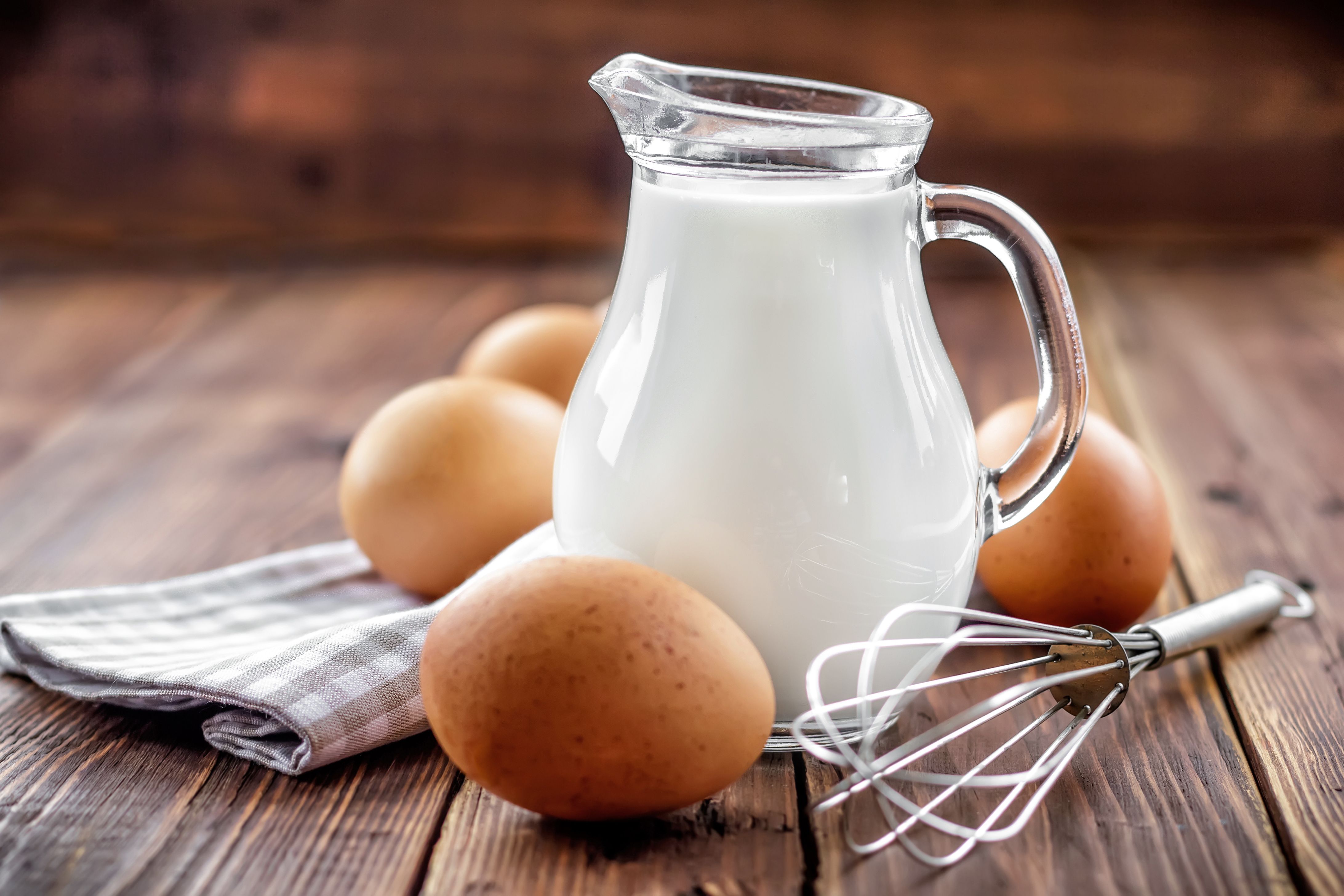Scientists Use Analytical GREEnness Metric to Test for Antibiotics in Food Samples
Scientists from Gdańsk University of Technology (GUT) in Gdańsk, Poland, recently tested a new system to determine the presence of antibiotic residues in animal product food samples such as milk and eggs. The researchers, who recently published their findings in TrAC Trends in Analytical Chemistry, used the Analytical GREEnness metric (AGREE), as a method for analysis (1).
Milk and eggs | Image Credit: © Sea Wave - stock.adobe.com

AGREE is a computational approach used to measure impacts in 12 different principles of Green Analytical Chemistry (GAC) on a 0–1 scale. The results are converted into simple scores with different functions. Each category’s impact combining into a final score by calculated or weighted mean. These results are presented in a pictogram colored with a traffic light system that eases reading the results, while including a color scale that enables quick identification of weak points in assessed procedures.
There have been numerous analytical procedures, such as liquid chromatography–tandem mass spectrometry (LC–MS/MS), that have been used for the analysis of antibiotics in food samples. But these processes typically prove time-consuming, the researchers wrote. Greener approaches for analysis, such as AGREE, are becoming more popular. Many of these methods involve downscaling analytical operations, equipment miniaturization, and integration of new advanced materials into extraction procedures. Some other common methods include National Environmental Methods Index (NEMI), Eco-Scale Assessment (ESA), Green Analytical Procedure Index (GAPI), Complementary Green Analytical Procedure Index (ComplexGAPI), White Analytical Chemistry (WAC), and more.
In this paper, sample preparation procedures presented in the last 10 years were assessed, using tetracycline antibiotics as proof-of-concept analytes. The Maximum Residue Limits (MRLs) for tetracyclines are different depending on what foodstuff is being studied, and the greenness of evaluation methods was calculated using AGREE.
“Although food samples are complex matrices and sample preparation is tedious and time-consuming, significant efforts have been made to improve the greenness of analytical procedures,” the scientists wrote in the study (1).
Biodegradable surfactants like rhamnolipids can be an alternative to non-ionic surfactants currently in use. Additionally, natural sorbents could be important for developing sample preparation and its applicability in food analysis. Finally, the scientists pushed for more automation and miniaturization in sample preparation.
Reference
(1) Vakh, C.; Tobiszewski, M. Greenness assessment of analytical methods used for antibiotic residues determination in food samples. Trends Analyt. Chem. 2023, 166, 117162. DOI: https://doi.org/10.1016/j.trac.2023.117162
(2) Getahun, M; Abebe, R. B.; Sendekie, A. K.; Woldeyohanis, A. E.; Kasahun, A. E. Evaluation of Antibiotics Residues in Milk and Meat Using Different Analytical Methods. Int. J. Anal. Chem.2023, 4380261. DOI: https://doi.org/10.1155/2023/4380261
Troubleshooting Everywhere! An Assortment of Topics from Pittcon 2025
April 5th 2025In this installment of “LC Troubleshooting,” Dwight Stoll touches on highlights from Pittcon 2025 talks, as well as troubleshooting advice distilled from a lifetime of work in separation science by LCGC Award winner Christopher Pohl.
Characterizing Plant Polysaccharides Using Size-Exclusion Chromatography
April 4th 2025With green chemistry becoming more standardized, Leena Pitkänen of Aalto University analyzed how useful size-exclusion chromatography (SEC) and asymmetric flow field-flow fractionation (AF4) could be in characterizing plant polysaccharides.






